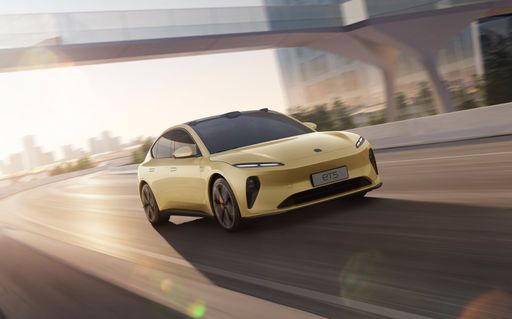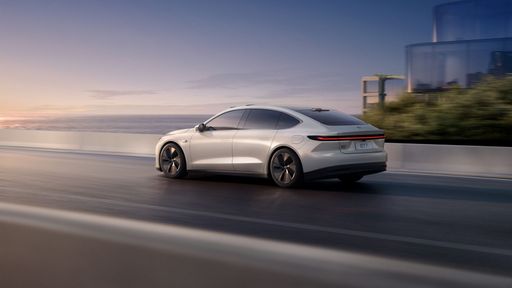Maxus Deliver 7 vs NIO ET5 – Differences & prices compared
Both models have their strengths – but which one suits you more?
Compare performance, efficiency, price and space directly: Maxus Deliver 7 or NIO ET5?
Costs and Efficiency:
When it comes to price and running costs, the biggest differences usually appear. This is often where you see which car fits your budget better in the long run.
Maxus Deliver 7 has a evident advantage in terms of price – it starts at 30600 £, while the NIO ET5 costs 40700 £. That’s a price difference of around 10125 £.
In terms of energy consumption, the advantage goes to the NIO ET5: with 18.60 kWh per 100 km, it’s significantly more efficient than the Maxus Deliver 7 with 26.90 kWh. That’s a difference of about 8.30 kWh.
As for range, the NIO ET5 performs distinct better – achieving up to 590 km, about 220 km more than the Maxus Deliver 7.
Engine and Performance:
Under the bonnet, it becomes clear which model is tuned for sportiness and which one takes the lead when you hit the accelerator.
When it comes to engine power, the NIO ET5 has a noticeable edge – offering 490 HP compared to 353 HP. That’s roughly 137 HP more horsepower.
In acceleration from 0 to 100 km/h, the NIO ET5 is decisively quicker – completing the sprint in 4 s, while the Maxus Deliver 7 takes 7.20 s. That’s about 3.20 s faster.
In terms of top speed, the NIO ET5 performs to a small extent better – reaching 200 km/h, while the Maxus Deliver 7 tops out at 160 km/h. The difference is around 40 km/h.
There’s also a difference in torque: NIO ET5 pulls distinct stronger with 700 Nm compared to 515 Nm. That’s about 185 Nm difference.
Space and Everyday Use:
Whether family car or daily driver – which one offers more room, flexibility and comfort?
Seats: NIO ET5 offers distinct more seating capacity – 5 vs 3.
In curb weight, NIO ET5 is hardly perceptible lighter – 2215 kg compared to 2360 kg. The difference is around 145 kg.
In maximum load capacity, the Maxus Deliver 7 performs significantly better – up to 7200 L, which is about 6065 L more than the NIO ET5.
When it comes to payload, Maxus Deliver 7 significantly takes the win – 1140 kg compared to 475 kg. That’s a difference of about 665 kg.
Who comes out on top?
Overall, the NIO ET5 shows itself to be leaves the rival little chance and secures the title of DriveDuel Champion.
It convinces with the more balanced overall package and proves to be the more versatile choice for everyday use.

NIO ET5
Maxus Deliver 7
The Maxus Deliver 7 stands out in the commercial vehicle sector with its modern design and practical features, making it a versatile choice for urban deliveries. Its spacious interior and ergonomic layout ensure a comfortable driving experience, while advanced connectivity options enhance functionality for busy professionals. With a focus on sustainability, this vehicle offers eco-friendly driving solutions without compromising on performance or reliability.
detailsNIO ET5
The ET5, a sleek and innovative model from NIO, seamlessly blends futuristic design with advanced electric vehicle technology. Its interior offers a luxurious yet minimalist vibe, showcasing high-quality materials and cutting-edge digital interfaces. With impressive range capabilities and dynamic performance, the ET5 is set to captivate both car enthusiasts and those focused on sustainable driving solutions.
details @ NIO
@ NIO
 @ NIO
@ NIO

|
|
|
|
|
Costs and Consumption |
|
|---|---|
|
Price
30600 - 53000 £
|
Price
40700 - 58700 £
|
|
Consumption L/100km
8 L
|
Consumption L/100km
-
|
|
Consumption kWh/100km
26.9 - 28.2 kWh
|
Consumption kWh/100km
18.6 - 18.9 kWh
|
|
Electric Range
310 - 370 km
|
Electric Range
456 - 590 km
|
|
Battery Capacity
-
|
Battery Capacity
73.5 - 90 kWh
|
|
co2
0 - 211 g/km
|
co2
0 g/km
|
|
Fuel tank capacity
-
|
Fuel tank capacity
-
|
Dimensions and Body |
|
|---|---|
|
Body Type
Cargo Van
|
Body Type
Hatchback
|
|
Seats
3
|
Seats
5
|
|
Doors
4
|
Doors
5
|
|
Curb weight
2360 - 2595 kg
|
Curb weight
2215 - 2235 kg
|
|
Trunk capacity
-
|
Trunk capacity
386 L
|
|
Length
4998 - 5372 mm
|
Length
4790 mm
|
|
Width
2030 mm
|
Width
1960 mm
|
|
Height
1990 - 1999 mm
|
Height
1499 mm
|
|
Max trunk capacity
5900 - 7200 L
|
Max trunk capacity
1135 L
|
|
Payload
905 - 1140 kg
|
Payload
455 - 475 kg
|
Engine and Performance |
|
|---|---|
|
Engine Type
Electric, Diesel
|
Engine Type
Electric
|
|
Transmission
Automatic, Manuel
|
Transmission
Automatic
|
|
Transmission Detail
Reduction Gearbox, Manual Gearbox
|
Transmission Detail
Reduction Gearbox
|
|
Drive Type
Front-Wheel Drive, All-Wheel Drive
|
Drive Type
All-Wheel Drive
|
|
Power HP
148 - 353 HP
|
Power HP
490 HP
|
|
Acceleration 0-100km/h
7.2 - 11.6 s
|
Acceleration 0-100km/h
4 s
|
|
Max Speed
120 - 160 km/h
|
Max Speed
200 km/h
|
|
Torque
330 - 515 Nm
|
Torque
700 Nm
|
|
Number of Cylinders
4
|
Number of Cylinders
-
|
|
Power kW
108 - 260 kW
|
Power kW
360 kW
|
|
Engine capacity
1996 cm3
|
Engine capacity
-
|
General |
|
|---|---|
|
Model Year
2024 - 2025
|
Model Year
2023
|
|
CO2 Efficiency Class
A, G
|
CO2 Efficiency Class
A
|
|
Brand
Maxus
|
Brand
NIO
|
Is the Maxus Deliver 7 offered with different drivetrains?
The Maxus Deliver 7 is offered with Front-Wheel Drive or All-Wheel Drive.
The prices and data displayed are estimates based on German list prices and may vary by country. This information is not legally binding.
